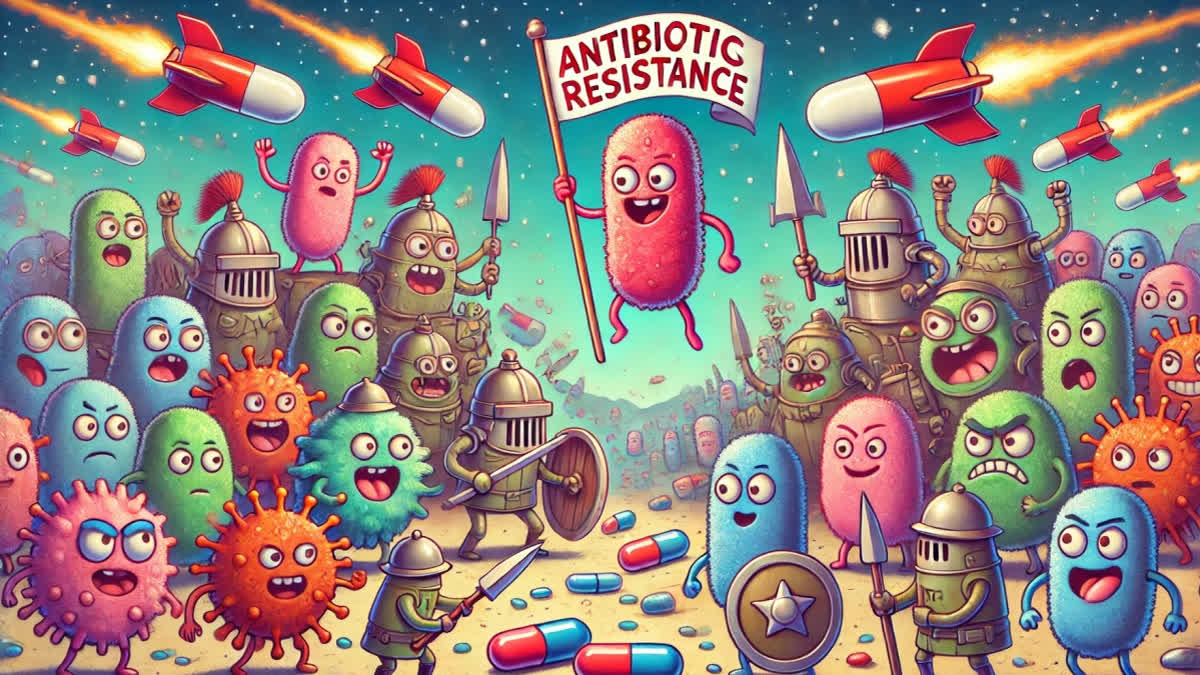Imagine a world where routine infections become untreatable, where the miracle of antibiotics no longer works and where minor surgeries or injuries carry life-threatening risks. This dystopian scenario isn’t far-fetched. It is a looming reality called Antimicrobial Resistance (AMR).
As we mark AMR Awareness Week from November 18 to 24, it’s time to examine this invisible crisis.
What Is Antimicrobial Resistance (AMR)?
In 1928, Alexander Fleming discovered penicillin, ushering in an era where bacterial infections were no longer a death sentence. But today, the effectiveness of antibiotics, antivirals and antifungals is waning.
“AMR occurs when microorganisms (bacteria, viruses, fungi) develop the ability to survive drugs designed to kill them. Overuse or misuse of antibiotics intensifies this problem, creating resistant strains that spread and multiply,” says Dr Raman Gaikwad, Infectious Diseases Physician, Sahyadri Super Speciality Hospitals in Pune.
AMR doesn’t just threaten individuals. It jeopardises modern medicine itself. Without effective antimicrobials, treatments for cancer, organ transplants, and other life-saving procedures become far riskier.
How Did We Get Here?
AMR isn’t just an accident of evolution. It is fuelled by human behaviour. Consider these factors:
Overprescription: Antibiotics are often prescribed for viral illnesses like the common cold, where they’re ineffective. “This unnecessary use creates a selection pressure,” says Dr. Gaikwad. “Resistant bacteria survive, multiply, and spread.”
Incomplete Courses: Patients sometimes stop taking antibiotics as soon as they feel better, leaving resilient bacteria alive to regroup and fight back.
Prophylactic Overuse: Routine surgeries sometimes involve antibiotics as a precaution, even when they’re not strictly necessary.
Hospital Practices: Poor hygiene, inadequate sterilization, and patient proximity facilitate the spread of resistant bacteria.
Agricultural Misuse: Livestock are frequently given antibiotics to promote growth, contributing to resistance that can jump to humans via food or water.
The result is that an estimated 700,000 deaths annually worldwide from drug-resistant infections, a number projected to rise to 10 million by 2050 if there is no serious intervention.
Enter The One Health Approach
The One Health Approach is a holistic strategy that recognises the interconnectedness of human, animal, and environmental health. It’s based on a simple premise: to tackle AMR effectively, we need to address its origins across sectors.
Imagine a Venn diagram where human health, animal health, and environmental health overlap. That intersection is where AMR thrives, and where the fight against it must focus. A joint study by researchers from the University of York concludes that the One Health framework has the potential to assess AMR at both a subsystem and a system level, for the benefit of researchers, regulators and policy makers.
How One Health Works
Antibiotic Stewardship Programmes (ASPs): These hospital-based initiatives ensure antibiotics are prescribed responsibly. “ASPs use diagnostic tools to identify the exact cause of an infection and recommend the best treatment,” explains Dr. Gaikwad.
Public Awareness: Campaigns like India’s Red Line Campaign educate people on the dangers of buying antibiotics without a prescription.
Animal Health: Reducing antibiotic use in agriculture is vital. Livestock industries are shifting to alternatives like probiotics or vaccines to minimize dependency on antibiotics.
Environmental Health: Wastewater from pharma factories and hospitals often contains antibiotic residues, creating hotspots for resistant bacteria. Stricter regulations and innovative water treatment technologies can mitigate this risk.
Strategies to Turn the Tide
Dr. Gaikwad offers actionable solutions:
- Doctors should start with broad-spectrum antibiotics only when absolutely necessary and switch to narrower options as soon as possible.
- Tracking resistant strains helps guide treatment decisions.
- Handwashing and equipment sterilisation in hospitals prevent the spread of resistant bacteria.
- Developing new antibiotics and alternative therapies is crucial, as the pipeline for such innovations has slowed dramatically.
On a broader scale, global cooperation is essential. Initiatives like the Global Antimicrobial Resistance and Use Surveillance System (GLASS) monitor resistance trends worldwide, fostering collaboration between nations.
How You Can Combat AMR
As individuals, we have a part to play in combating AMR:
Follow Prescriptions: Take antibiotics only when prescribed and complete the full course.
Practice Hygiene: Wash your hands frequently to prevent infections.
Be Informed: Understand that not all illnesses require antibiotics and consult your doctor for guidance.
AMR affects how we farm, how we treat patients, and how we live. It’s a crisis that erases decades of progress, not with a bang but with a silent, insidious resistance.
The good news is that it’s a solvable problem. By embracing the One Health Approach, we can preserve the miracle of antimicrobials for future generations. And it starts with recognising that the health of one affects the health of all.
Disclaimer: The information provided in this health article is for general informational purposes only and is not intended as medical advice. It is not a substitute for professional healthcare consultation, diagnosis, or treatment. Always seek the advice of your physician or other qualified health provider with any questions you may have regarding a medical condition.
Read more:



